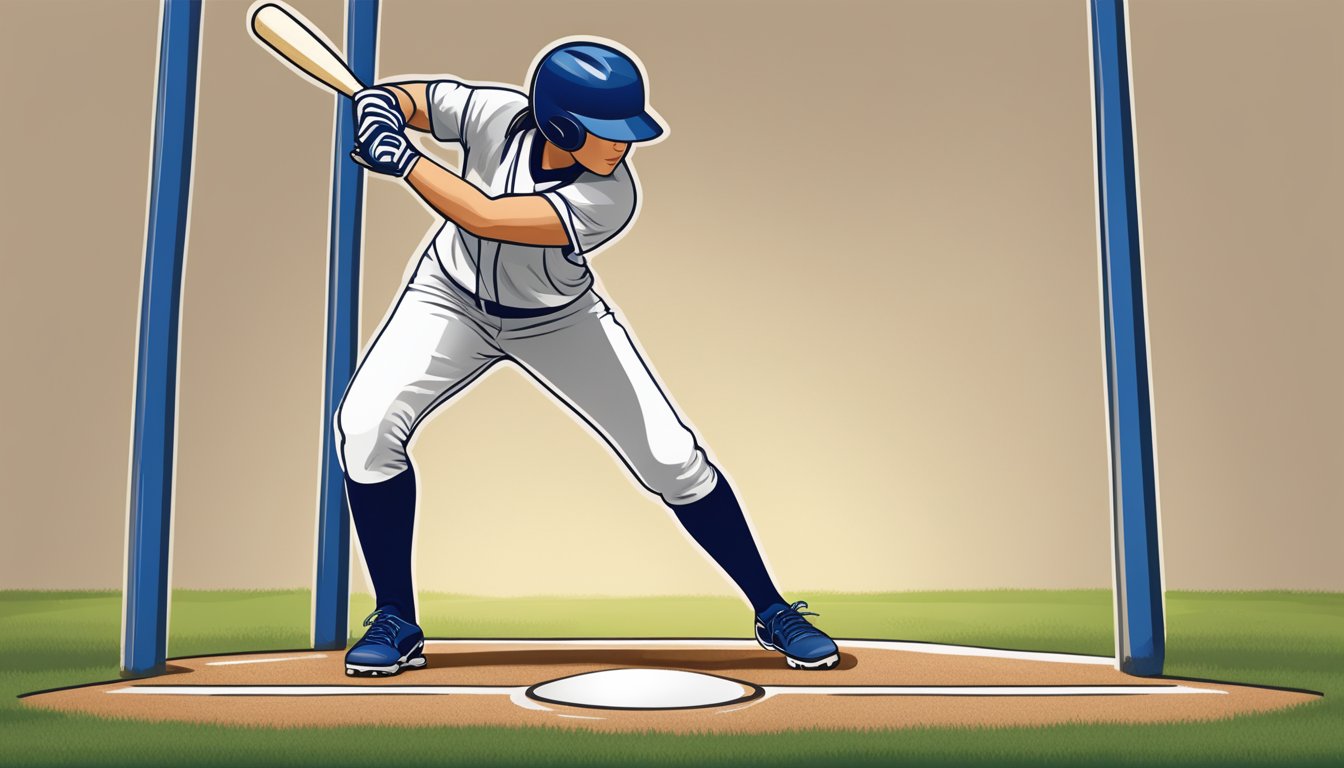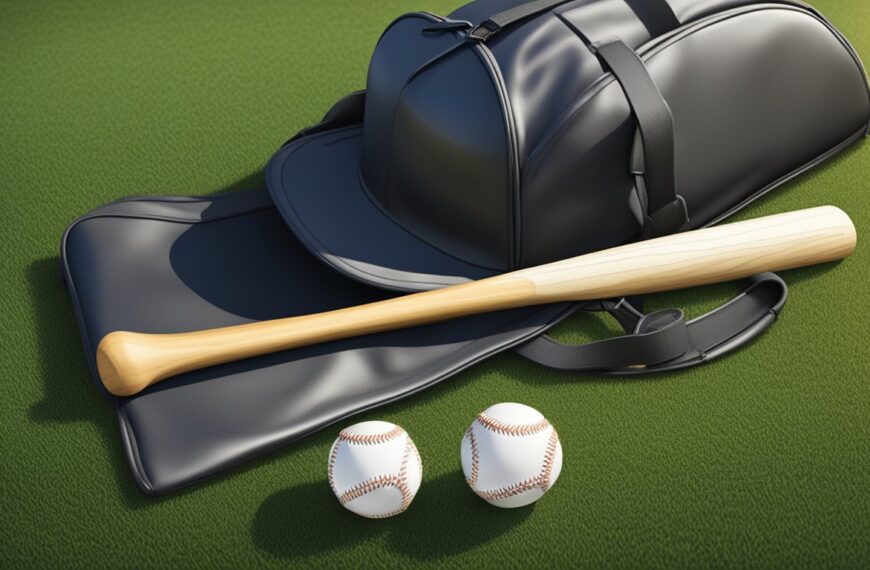In the realm of softball, consistent and effective batting practice is essential for players aiming to elevate their game. The use of a batting tee is a powerful tool in this quest for improvement. It offers an unmatched opportunity for players to work on their swing mechanics without the need for a pitcher. This allows for a focus on form and technique, breaking down the swing into manageable components that can be repeatedly practiced.
The flexibility offered by a batting tee is significant as it allows players to practice hitting the ball at various heights and angles, closely simulating in-game pitch locations. This can lead to more precise hitting, as players develop muscle memory for different types of pitches. Regular use of the batting tee can also instill discipline and patience in players, as they spend time honing their skills through solitary practice. The autonomy of using a batting tee encourages a player’s self-analysis and adjustment, which is crucial for in-game adaptability.
Key Takeaways
- A batting tee aids in refining swing mechanics through focused, repetitive practice.
- Players can simulate hits at varied pitch heights and angles, enhancing their adaptability.
- The independence of tee practice promotes self-analysis and in-game hitting precision.
Fundamentals of Batting Tee Use
For softball players, mastering the use of a batting tee can lead to significant improvements in hitting technique and mechanics. By isolating the swing, athletes can focus on refining their skills.
https://www.youtube.com/watch?v=Ptii0gj4PSk&embed=true
Understanding Batting Tees
A batting tee is an essential training tool for softball hitters. It provides a stationary ball that allows players to practice their swing without the variability of a pitched ball. The tee’s adjustable height enables hitters to work on hitting the ball at different vertical locations, promoting adaptability in their swing.
- Key Components of a Batting Tee:
- Base: Ensures stability during tee work.
- Upright: Holds the ball and is adjustable for height settings.
- Topper: Cradles the softball and is often flexible to minimize interference with the swing.
Benefits of Tee Work for Skill Development
Tee work in softball offers numerous benefits that contribute to a player’s development. Hitters can incrementally tweak their swing mechanics, focusing on aspects such as stance, bat path, and point of contact without the pressure of a live pitch.
- Benefits Include:
- Repetition: Allows for focused and repetitive swing practice.
- Muscle Memory: Builds consistent swing mechanics.
- Adjustments: Players can isolate and correct specific weaknesses in their batting.
Setting Up the Batting Tee
Proper setup of a batting tee is critical for effective practice. A hitter should adjust the tee to align with their desired point of contact, which can vary depending on the pitch location they are simulating.
- Adjustment Guidelines:
- Tee Height: The tee should be adjusted so that the softball is at the same height as it would be if it were crossing the plate.
- High Tee: Practicing with the tee set at a high level allows hitters to work on swinging at pitches in the upper strike zone, enhancing adaptability.
By adhering to the fundamentals of batting tee use, softball players can make the most out of their practice sessions and refine their batting skills.
Enhancing Hitting Techniques
https://www.youtube.com/watch?v=ELo4zAOKTkg&embed=true
Using a batting tee allows softball players to isolate and refine specific aspects of their swing. These drills lead to enhanced performance during live pitching.
Improving Swing Mechanics
Proper swing mechanics are crucial for consistent hitting. A batting tee provides a static environment where players can focus on swing path, ensuring the bat follows a direct line to the ball. This allows hitters to minimize movements, such as casting, which can lead to weak ground balls and pop-ups. By practicing different swing techniques, players can develop a compact, efficient swing that translates into powerful line drives.
Mastering Contact With the Ball
Repetition is key in achieving consistent contact with the ball. A batting tee helps players to repeatedly hit the ball at the right spot on the bat, known as the sweet spot. Concentrating on making contact on the sweet spot maximizes the ball’s velocity off the bat, leading to more base hits. Regular use of the tee helps players to refine their hand-eye coordination, crucial for making consistent contact.
Practicing Different Pitch Locations
Understanding the strike zone and adapting the swing to various pitch locations is essential. When using a batting tee, players can position the ball in different parts of the strike zone—inside, outside, high, or low. This practice helps batters:
- Adjust their stance and swing for an inside pitch to avoid pulling the ball foul.
- Extend their arms properly for an outside pitch, driving the ball to the opposite field.
By systematically practicing hitting pitches in each location, players can cover the entire strike zone effectively, ensuring they’re prepared to connect with whatever pitch is thrown their way during a game.
Training and Development
https://www.youtube.com/watch?v=nDZImvVFHvg&embed=true
Optimizing a softball player’s performance at the plate begins with a structured approach to training and development. By incorporating a batting tee into practice, players can enhance their technique and timing through focused repetition and tailored practice plans, with their progress documented through video feedback.
Designing Effective Practice Plans
Effective practice plans are foundational to player development. Coaches need to design drills that accommodate various skill levels, ensuring that each player has the opportunity to grow and refine their abilities. Beginner players may start with the basics of stance and swing mechanics, while advanced players focus on increasing power and precision.
Example of a Beginner Drill:
- Stance & Swing Basics
- Reps: 10 swings focusing on form
- Objective: Establish comfortable and effective batting stance
Example of an Advanced Drill:
- Power Hitting
- Reps: 20 swings with emphasis on hip rotation
- Objective: Increase hitting power and speed
Skill Level Progression From Beginners to Advanced
Beginners often start with the simplest techniques, practicing with the tee at a fixed, lower height to master a level swing. Progression involves not just a higher number of reps, but also increasing complexity in drills, such as altering the tee’s height and position to simulate various pitch locations. Advanced players will often incorporate training aids that challenge their hand-eye coordination and timing, preparing them for live game conditions.
Skill Progression Table:
| Skill Level | Focus Area | Technique Development |
|---|---|---|
| Beginner | Basic swing mechanics | Stable, balanced stance |
| Intermediate | Timing and consistency | Adjusting to different heights |
| Advanced | Power and precision | Adapting to diverse pitch types |
Using Video Demonstrations for Feedback
Video demonstrations provide a powerful tool for a coach’s training arsenal. Visual feedback allows both coaches and players to analyze mechanics and identify areas for improvement. Slow-motion playback can pinpoint the precise moment adjustments are needed, such as a change in stance or the point of contact between bat and ball. This tool facilitates a more effective training session as it helps solidify the correct techniques through visual learning methods.
Mental and Physical Preparation
https://www.youtube.com/watch?v=069LoKyvsgA&embed=true
Using a batting tee can significantly enhance a softball player’s mental and physical readiness by fostering confidence and focus, allowing for adjustments that encourage muscle memory development, and aiding in the establishment of consistent rhythm and timing.
Building Confidence and Focus
The repetitive nature of practice with a batting tee allows players to build confidence in their swing. High-quality repetitions contribute to a confident mindset at the plate, with each successful hit reaffirming a player’s capability. This targeted practice also cultivates a deeper level of focus, as players can isolate the technical aspects of their swing without the pressure of a live pitch.
- Confidence: Steady improvement through practice.
- Focus: Ability to concentrate on swing mechanics.
Adjustments and Muscle Memory
Making adjustments is a critical aspect of hitting that can be honed with a batting tee. Players have the liberty to experiment with their stance, swing path, and point of contact, which are all easier to modify in a controlled environment. Over time, these tailored adjustments become second nature through muscle memory, leading to automatic and efficient movements during the game.
- Adjustments: Experiment with stance and swing.
- Muscle Memory: Reinforce correct movements.
Developing Rhythm and Timing
Rhythm and timing are essential components of a successful swing. By practicing with a batting tee, softball players can develop a personal rhythm that suits their style, translating to better timing in live-game scenarios. Consistent practice allows hitters to internalize the pace of their swing and find the optimal moment for making contact with the ball.
- Rhythm: Find a personal, comfortable swing pace.
- Timing: Learn to synchronize swing with ball contact.
Practical Aspects of Batting Tees
https://www.youtube.com/watch?v=VBGjLcNTbLw&embed=true
Batting tees are essential tools for softball players, providing consistent, stable, and simulated game conditions to improve performance at the plate. Their use in drills can lead to more successful and consistent runs batted in during games.
Selecting the Right Batting Tee
The choice of a batting tee should reflect the player’s needs for durability and stability. A premium batting tee often features a mix of metal and PVC, offering both robustness and a bit of flexibility. Here are key features to consider:
- Height Adjustment: Ensure the tee is height-adjustable to simulate pitches at various strike zones.
- Base Weight: A weighted base provides stability, reducing the chance of tipping.
- Material: Metal tees tend to be more durable than those made from softer materials.
Maintaining and Caring for Your Tee
To ensure longevity and performance of a batting tee, routine maintenance is necessary. Follow these tips:
- Clean Regularly: Wipe down the tee to remove dirt and debris, which keeps the surface smooth for the ball.
- Storage: Store the tee in a cool, dry place away from direct sunlight to prevent material degradation.
Incorporating Tees in Team Drills
Incorporating batting tees into team drills helps players focus on specific skills like vision and balance:
- Placement Drills: Position the tee at various parts of home plate to practice hitting to different field areas.
- Balance Drills: Use the tee to reinforce proper weight distribution throughout the swing.
- Vision Drills: Practice swinging with the correct head position, ensuring the eyes remain on the ball’s point of contact.
- Portable Tees: Opt for portable tees to facilitate flexible practice sessions.
Advanced Techniques and Strategies
https://www.youtube.com/watch?v=C5V6wQC6_xA&embed=true
Utilizing a batting tee allows softball players to concentrate on refining their hitting mechanics and strategically planning their approach at the plate. This section outlines how to address specific hitting challenges, develop strategic approaches through tee drills, and combine mental visualization with swing analysis for better performance.
Working on Specific Hitting Challenges
For players struggling with hitting to the opposite field, the tee can be positioned in various locations to simulate outside pitches. This training method helps them to focus on adjusting their stance and swing path, facilitating the hard work required to overcome this particular challenge.
Exploiting Tee Drills for Strategy Development
Sophisticated tee drills can have a substantial impact on a player’s ability to face a live pitcher. By simulating game scenarios, such as hitting against the shift or finding gaps in the defense, players can develop the muscle memory needed for strategic hitting during live games. Observing the ball’s trajectory off the tee helps in tracking the ball more effectively.
Integrating Mental Visualisation and Swing Analysis
Consistent batting practice with a tee supports mental preparation, allowing a player to visualize various pitch types and plan their ideal swing. Players can record themselves in the batting cage to analyze their mechanics and ensure they are working toward that perfect swing. Combining visualization with physical repetition leads to improvements that mimic the discipline of a Major League baseball player.
Analyzing Impact on Performance
https://www.youtube.com/watch?v=V91yVws6BbE&embed=true
Using a batting tee can significantly enhance a softball player’s performance. Through consistent repetition, hitters fine-tune their swinging mechanics, leading to a more successful contact rate with the ball. Players can focus on isolated aspects of their swing, such as the point of contact, stance, and bat path. This targeted practice builds muscle memory, fostering an automatic response during live pitches.
Skill Enhancement
| Skill Aspect | Improvement Noted |
|---|---|
| Swing Path | More consistent, leading to better optimization of hitting angles. |
| Timing | Improved due to ability to practice without the unpredictability of pitch speed and location. |
| Hand-Eye Coordination | Enhanced by focusing on making solid contact with a stationary ball. |
Performance Metrics
- Hits: Increases as players adjust their swing for optimal ball contact.
- Consistency: Achieved through repeated drills, resulting in reliable performance.
- Confidence: Elevated when hitters experience repeated success during practice.
Softball players benefit from the use of batting tees as it allows them to break down and reconstruct their hitting mechanics for improved mechanics and skill development. It directly impacts their ability to make consistent contact. The drill environment is less pressured than a game, leading to a boost in confidence.
The outcomes extend beyond practice—players carry the repetition-built skills into games, translating drill success into game-day performance. Coaches and players alike can witness the transformation of a hitter’s skill set as they become adept at making solid contact with the ball, elevating their hitting mechanics to new heights.
Selecting Equipment and Accessories
https://www.youtube.com/watch?v=hXWwZkQ7rII&embed=true
When selecting a batting tee for softball training, players and coaches should consider the equipment’s durability, portability, and its ability to enhance performance. A durable batting tee is crucial for withstanding repetitive use and variable weather conditions. Tees made from high-quality, premium materials such as metal or heavy-duty PVC assure longevity.
Key Points for Equipment Selection:
- Material: Opt for tees with a solid metal base for stability and a flexible upper part to absorb impact.
- Portability: A portable design enables easy transportation to and from the field.
- Height Adjustability: Ensure the tee is adjustable to accommodate various strike zones.
- Weighted Base: A weighted or wide-set base prevents tipping and ensures the tee stays stable during practice.
Accessories to Consider:
- Extra Bases: Having additional bases encourages a seamless practice with quick replacements if needed.
- Bat Weights: To improve bat speed, consider bat weights for warm-up swings.
| Accessory | Purpose | Benefit |
|---|---|---|
| Extra Bases | Quick replacement | Minimizes downtime during practice |
| Bat Weights | Enhances bat speed and strength | Promotes a faster, more powerful swing |
In summary, players should look for baseball and softball tees that match their individual needs and contribute to a focused and efficient practice. A softball coach’s guidance can also be instrumental in selecting the right equipment to foster skill development.
Frequently Asked Questions
The use of a batting tee in softball is critical for mastering hitting technique and fostering swing consistency. These FAQs address specific improvements and strategies in utilizing a batting tee during training.
How does using a batting tee improve hitting technique in softball?
Using a batting tee allows players to focus on their swing’s finer points without the variability of pitch speed and placement. It helps in isolating and correcting mechanical issues, leading to a more efficient and controlled hitting technique.
What benefits does a batting tee offer compared to live pitching for practice?
A batting tee provides a stable, consistent platform for hitting that eliminates the uncertainties associated with live pitching. It allows for repetitive practice, which is invaluable for muscle memory development and the refinement of the swing.
Can utilizing a batting tee enhance a player’s swing mechanics and consistency?
Yes, regular use of a batting tee can significantly enhance a player’s swing mechanics and consistency. It promotes a steady batting stance, proper weight transfer, and the repetition necessary to create a consistent swing path.
At what age or skill level should a softball player start practicing with a batting tee?
Players can begin using a batting tee at any age or skill level. For young players, it’s a foundational tool for developing basic hitting skills. Advanced players use it to maintain and fine-tune their technique.
How can one effectively incorporate a batting tee into their training routine for maximum benefit?
To effectively incorporate a batting tee into a training routine, players should practice with purpose, focusing on different areas of hitting such as swing path, bat speed, and follow-through. Consistent, deliberate practice with a variety of drills can lead to significant improvements.
What is the proper way to adjust a batting tee for different pitch locations?
The proper way to adjust a batting tee involves setting the tee at various heights and positions to mimic different pitch locations. This helps hitters practice swinging at pitches across the strike zone and develop the ability to hit balls pitched in any location.









